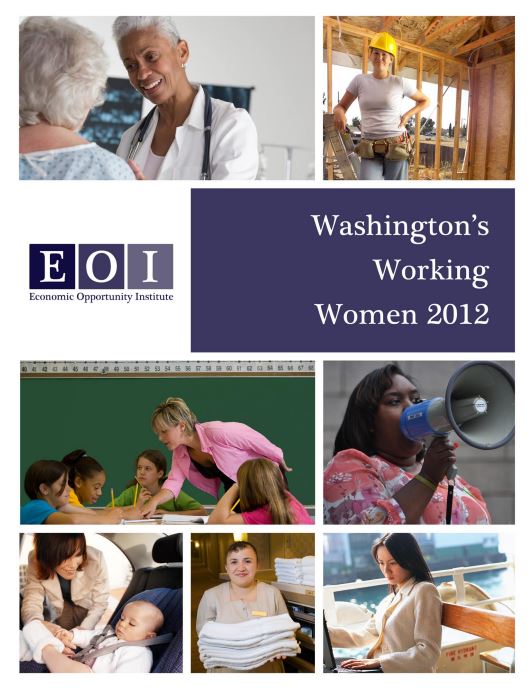
Washington’s Working Women 2012
From the Washington News Service:
SEATTLE – For women in the workforce in Washington, 2011 could be summarized as a year of treading water – or even sinking a bit. According to a new report, women’s wages and benefits in the Evergreen State continue to lag behind those of men. Even in the same job and age range and with similar education, a woman’s average monthly pay is 63 percent of what a man earns per month.
When the recession began, men were laid off at a faster pace than women. But Tatsuko Go Hollo, policy associate with the Economic Opportunity Institute (EOI), says now that the recovery is officially under way, that trend has reversed.
“Men are returning to work – slowly, but they are starting to gain jobs again – whereas we’re seeing women actually have continued to lose jobs. A big factor in that is that women are concentrated in a lot of the public-sector jobs.”
She notes that two of the hardest-hit professions, teachers and administrative personnel in state government, are largely comprised of women. The report says almost 15 percent of Washington women live in poverty – many as single mothers.
The state minimum wage will top $9 an hour for the first time starting in January. For full-time work, that means an annual income of about $19,000. Go Hollo says it will be a big help for low-wage and part-time workers, but even people who make almost twice that amount have a hard time supporting a family in the Seattle area.
“Even though $35,000 might sound okay for maybe one person, when you factor in taking care of those two children – their child care costs and what it takes to prepare them for school and keep them healthy – those bills really start to add up.”
Two-thirds of Washington children in single-parent families now live in poverty, the report says.
It also covers workplace benefits, which are eroding for all full-time workers. For example, only 54 percent of employers in Washington offer health insurance, down from 76 percent 10 years ago. In the same time period, the number of companies that offer retirement benefits dropped from 60 percent to 36 percent.
The report, “Washington’s Working Women 2012,” is available at www.eoionline.org.
More To Read
April 17, 2024
2023-24 Impact and Gratitude Report
Reflecting on a year of progress and transition at EOI
April 12, 2024
Welcoming our New Executive Director, Rian Watt!
EOI is excited to begin its next chapter under new leadership
April 4, 2024
Is There a Valid Argument Against Cost-Free College in Washington?
Cost-free college is a meaningful investment that would change lives. What's stopping Washington from making it happen?
